Giant’s latest iteration of its award-winning endurance platform, the Defy, is lighter, smoother and incorporates aero lessons learned from the brand's Propel aero road bike.
Where rivals such as Ridley, Cannondale and Vitus have given their latest endurance designs more of an all-road, gravel-capable spin, Giant has doubled down on making the latest Defy a pure road bike.
I got hold of a top-spec Giant Defy Advanced SL 0 ahead of the launch, and took it out on my favourite 75-mile road loop in Wiltshire, over successive days to see how it shapes up.
Overall, I’ve come away hugely impressed by the 2024 Giant Defy, which proves there’s plenty of life left in the endurance road bike. This Defy is faster and more fun than before, but it doesn’t forgo its signature forgiving ride quality.
Giant Defy Advanced SL 0 geometry and frameset
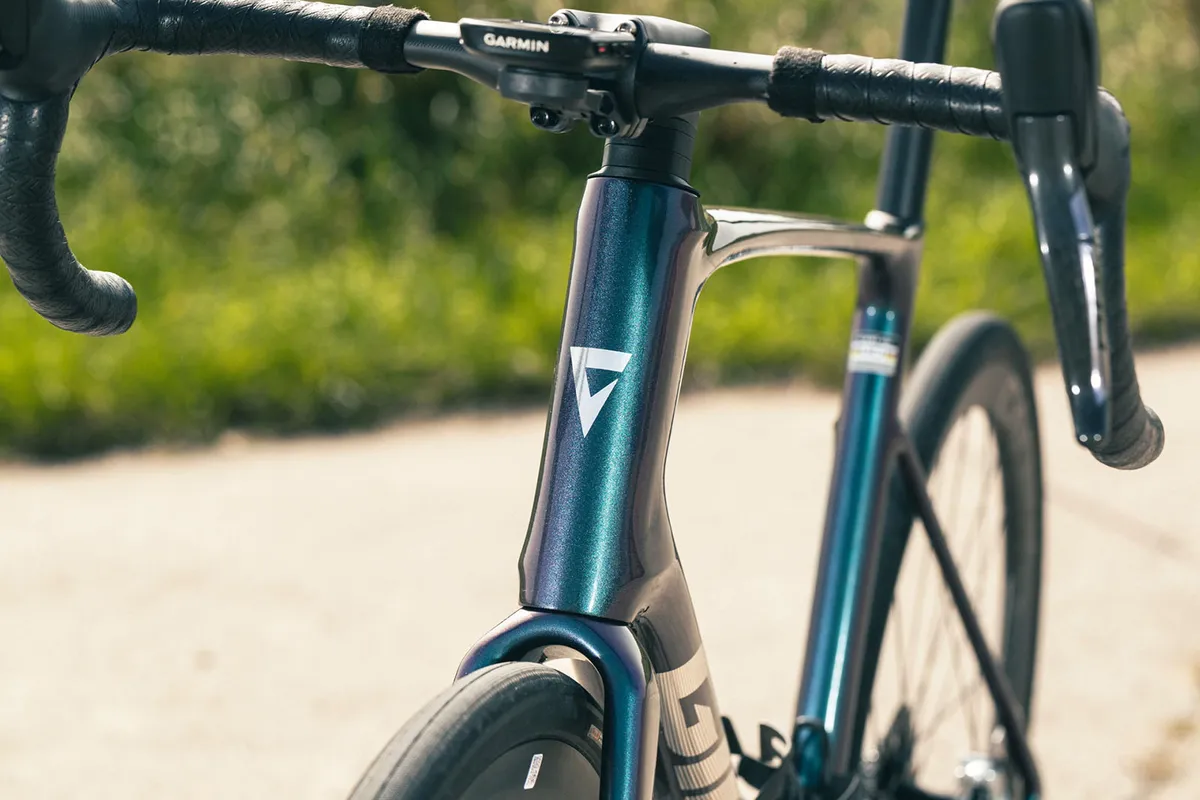
This generation of the Giant Defy offers a revised geometry to make it feel sportier, with lower stack heights and longer reach across the sizing range.
My size-large test bike, for example, has the stack lowered to a racy 596mm (from 605mm) and the reach extended out to 392.9mm (from 390). The 72.5-degree head and 73-degree seat angles are carried over, as is the 50mm fork rake and 58.6mm trail.
| | XS | S | M | M/L | L | XL |
|---|---|---|---|---|---|---|
| Seat angle (degrees) | 74.5 | 74 | 73.5 | 73 | 73 | 73 |
| Head angle (degrees) | 70.5 | 71.75 | 72.5 | 72.5 | 72.5 | 72.5 |
| Chainstay (mm) | 420 | 420 | 420 | 420 | 420 | 420 |
| Seat tube (mm) | 410 | 445 | 480 | 515 | 535 | 565 |
| Top tube (mm) | 515 | 530 | 545 | 560 | 575 | 595 |
| Head tube (mm) | 120 | 140 | 150 | 175 | 195 | 215 |
| Fork offset (mm) | 50 | 50 | 50 | 50 | 50 | 50 |
| Trail (mm) | 71.6 | 63.4 | 58.6 | 58.6 | 58.6 | 58.6 |
| Bottom bracket drop (mm) | 75 | 75 | 75 | 70 | 70 | 70 |
| Wheelbase (mm) | 995.2 | 994.4 | 997.7 | 1,010 | 1,025.2 | 1,040.4 |
| Standover (mm) | 705 | 733 | 762 | 796 | 814 | 841 |
| Stack (mm) | 527 | 541 | 558 | 577 | 596 | 615 |
| Reach (mm) | 368.9 | 374.9 | 379.8 | 383.7 | 392.9 | 402 |
| Handlebar width (mm) | 400 | 400 | 420 | 420 | 440 | 440 |
| Stem length (mm) | 80 | 90 | 100 | 100 | 110 | 110 |
| Crank length (mm) | 170 | 170 | 172.5 | 172.5 | 175 | 175 |
Giant says significant weight savings have been made in both the frame and fork.
The 2024 Defy Advanced SL frame now weighs a claimed 785g (in a size medium) – a saving of 195g versus the outgoing model. The SL fork also reduces weight by a claimed 15 per cent, bringing it from 403g down to a svelte 350g.
Even with reducing the weight, Giant hasn’t skimped on the details. The Defy still has proper mudguard/fender mounts (with a removable rear bridge), something the similarly racy Canyon Endurance CFR omitted.
Giant has also further developed the Carbon D-Fuse seatpost and handlebar to help smooth out rougher roads. The post gets a new flattened profile to aid fore-aft flex and the bar's top section is flattened and shaped to absorb more vibration and buzz than the previous D-Fuse handlebar.
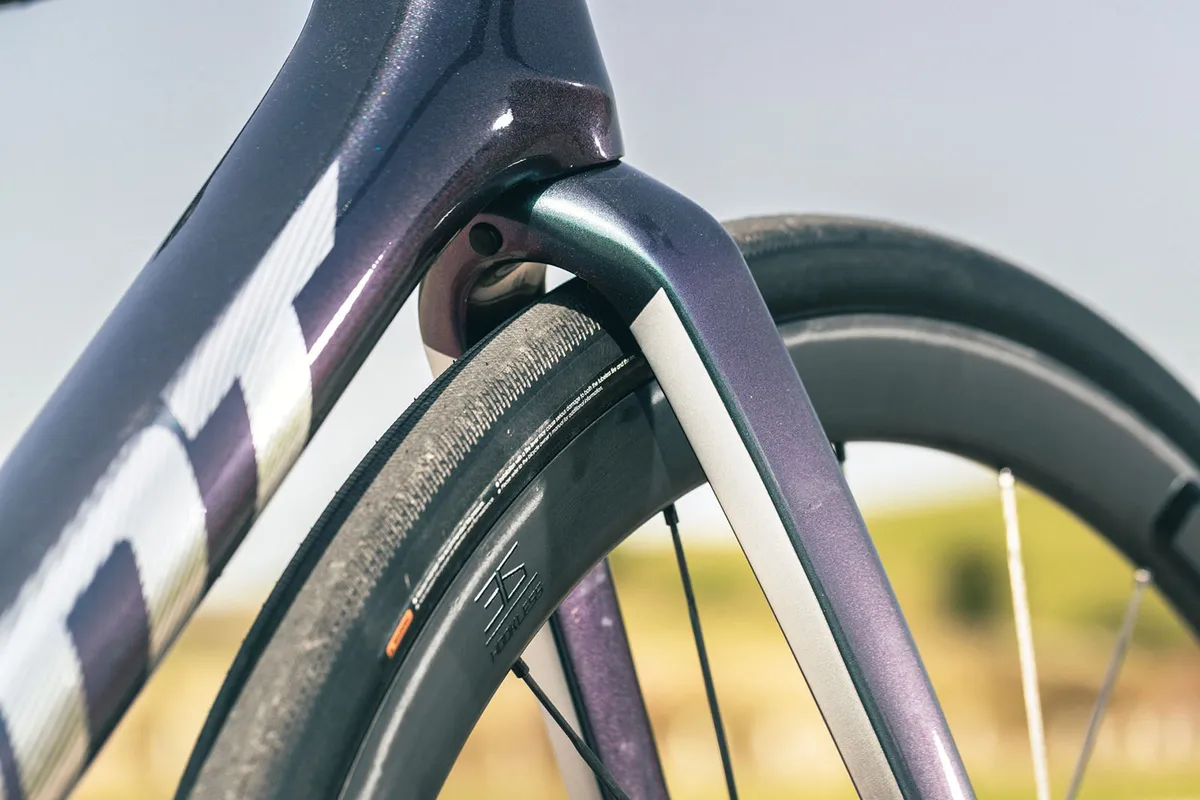
Tyre clearance has also been upped from 32mm up to a generous 38mm.
This Defy also gets much more consideration for aerodynamics throughout the frameset. The head tube, and its junction with the top tube and down tube, mimics the shaping of the Propel, albeit it's slimmed down somewhat.
The same goes for the fork legs with their aero-shaped leading edge and flat back. It's a similar scenario at the back with the seatstays, too.
The seat tube has a flat-back aerofoil profile, while the down tube resembles the truncated aerofoil shapes seen on older aero bikes, such as Trek’s original Madone and the first iteration of the Scott Foil.
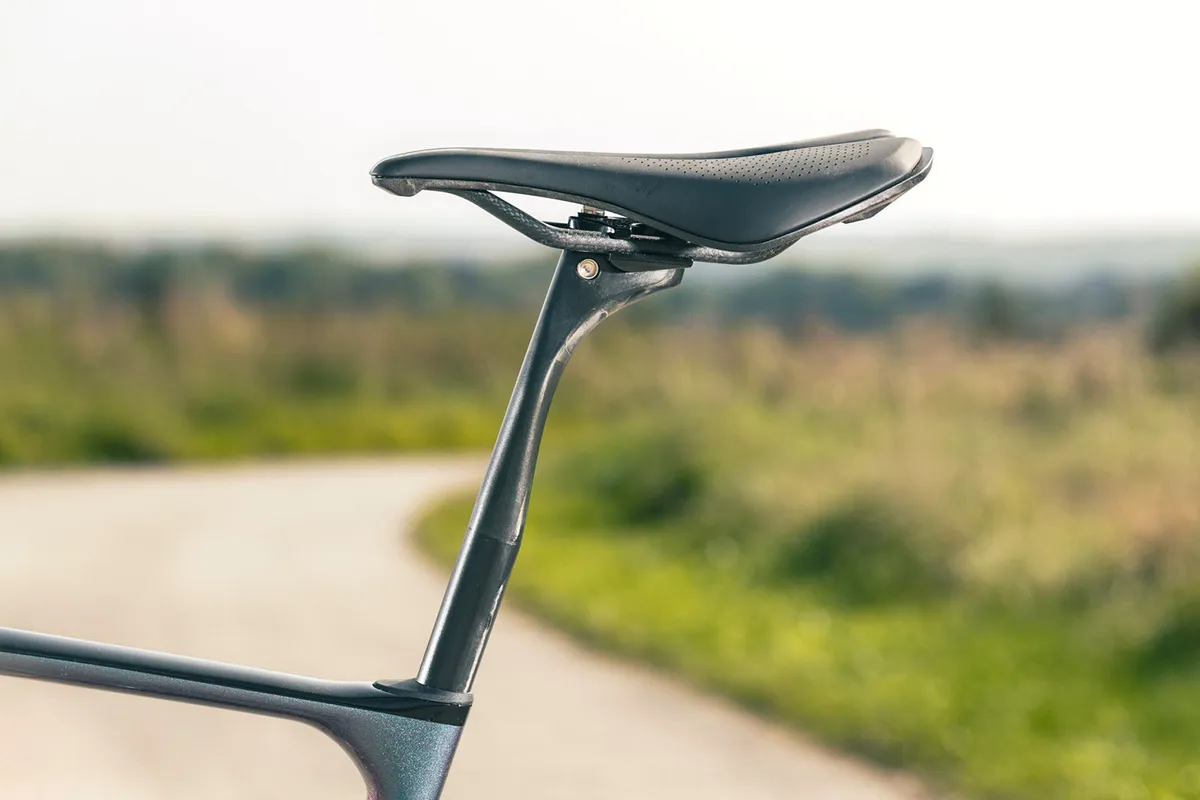
Giant, unlike most of its rivals, who have reverted to threaded, has stuck with a BB86 press-fit bottom bracket.
I’ve no issue with that, as I’ve had no issues with press-fit on any of my road bikes, but there's no doubt that some do prefer threaded designs for their user-friendliness.
Cable integration, revised stem and bar shapes and a new D-shaped carbon seatpost all further the combination of comfort and aero.
Giant Defy Advanced SL 0 build and specification
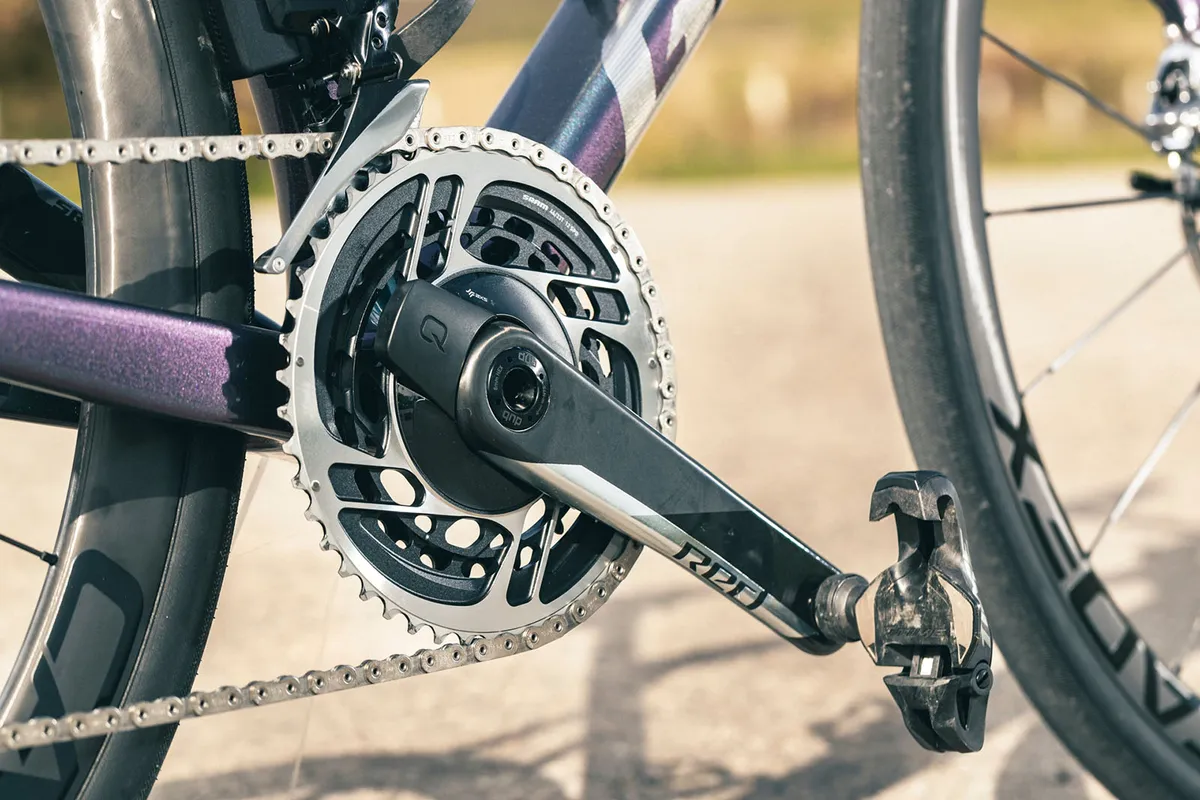
My test bike has a flagship spec, with SRAM’s range-topping Red eTap AXS groupset, complete with an integrated Quarq power meter spider.
The Defy Advanced SL 0 rolls on carbon-spoked Cadex 36 wheels. These are wrapped with 32c Cadex Classic tubeless tyres, which measure 33.2mm wide on the hookless Cadex rim.
As with all of Giant’s road bikes, the tyres come set up tubeless out of the box.
The Cadex rims measure 22.4mm-wide internally, which suits modern broader tyres well, and the claimed weight of 1,302g per pair is impressively light.
Up-front, Giant’s updated D-Fuse handlebar gets a flatter, more aerodynamic top section. Combined with the new Contact SLR Aerolight stem, it makes the Defy’s front end hose-free and much cleaner looking.
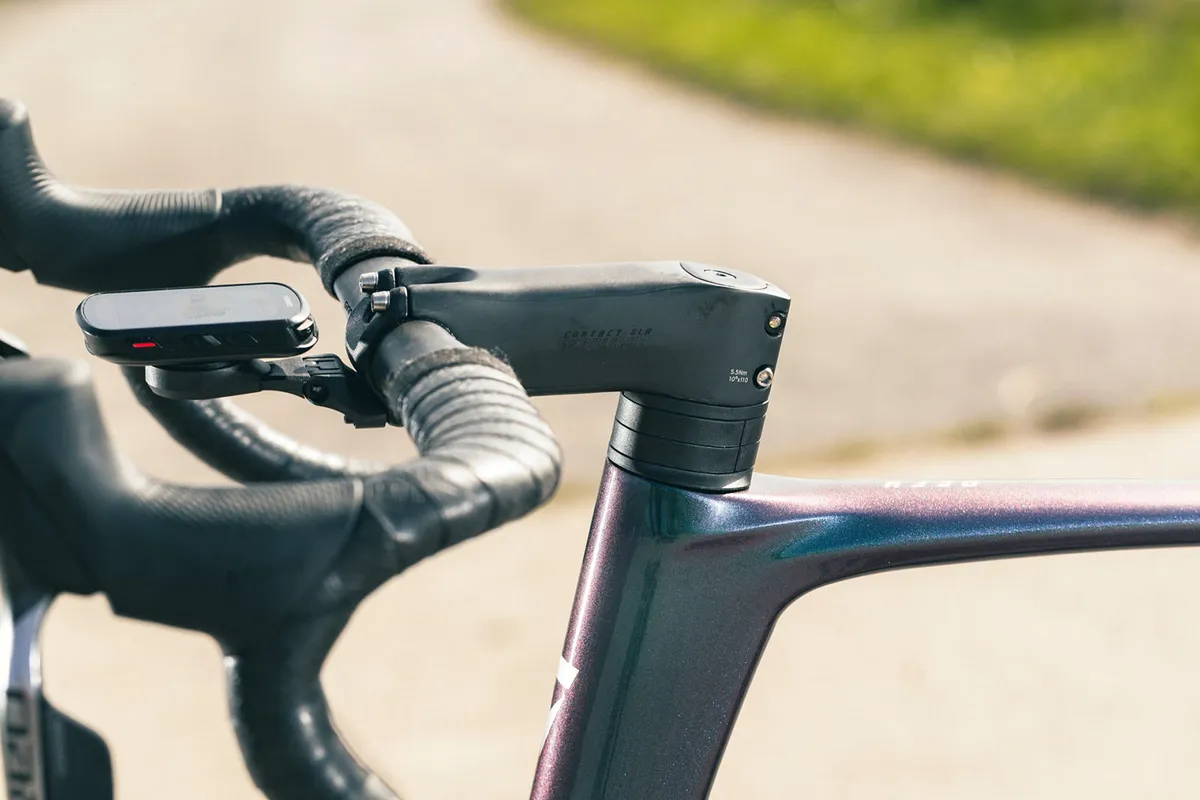
The brake hoses route internally through the bars, into a channel underneath the stem and down into the head tube in front of the steerer.
It's an almost identical system to that seen on the latest Propel and I’d imagine something we’ll see in the next generation of the TCR.
On paper, there’s nothing in the specification that doesn’t belong on a pure-bred superbike. Giant also includes a full-carbon integrated out-front mount and two carbon bottle cages.
The price, of £11,999, is high, but compared to similarly equipped rivals such as the Trek Domane SLR AXS Gen 4 (£13,400), Specialized S-Works Roubaix (£13,000) and Colnago’s endurance take on the C68, the C68 Allroad (£14,000), it's not quite so pricey. Canyon’s direct-to-market Endurace CFR AXS (£8,599) is significantly cheaper.
Giant Defy Advanced SL 0 ride impressions
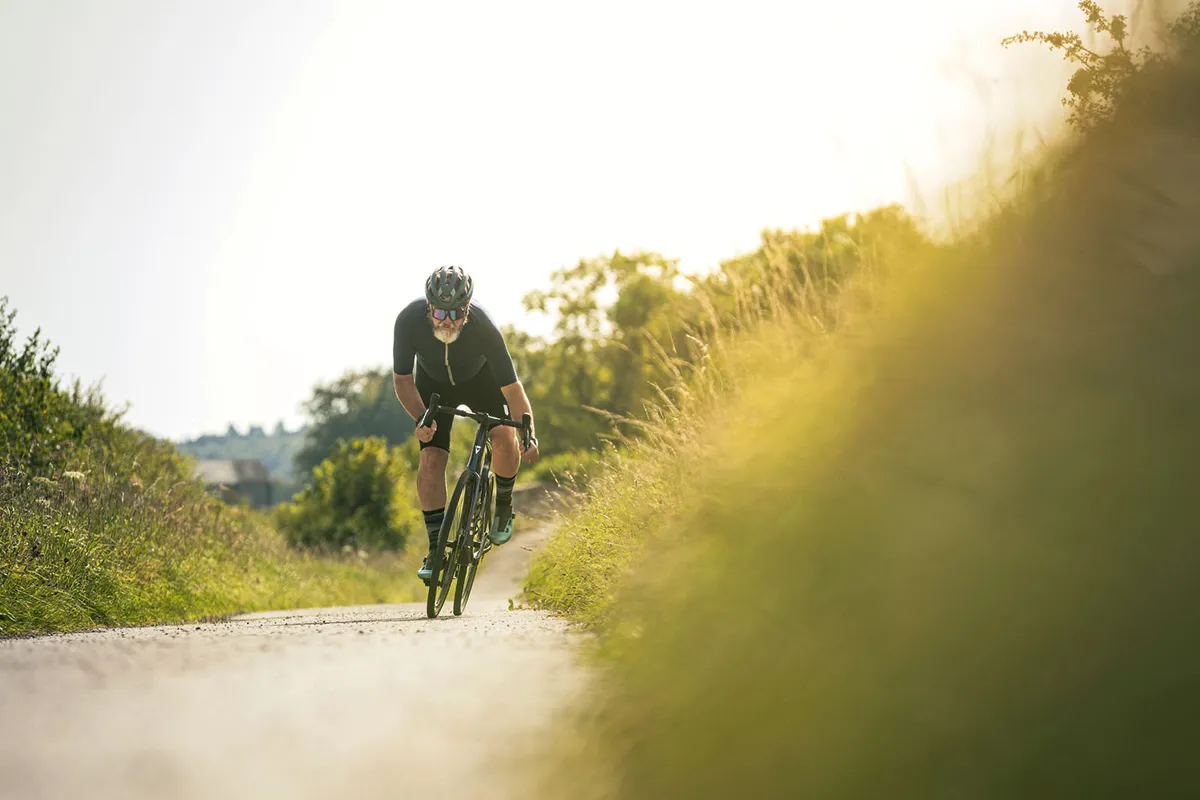
I considered the previous Giant Defy to be one of the best endurance bikes to date, so I had high hopes for this new-generation bike.
While the previous-generation range topped out at the Advanced Pro level, with a Shimano Ultegra Di2 build, Giant bringing a pro-spec build and lightened frameset underlines its commitment to the endurance bike as a format.
When many other brands are smushing their endurance models into a pseudo-gravel form, Giant's decision to make the latest Defy a true road bike pays off.
The steering geometry is unchanged from the previous incarnation of the bike (and the one before that), so it handles almost identically.
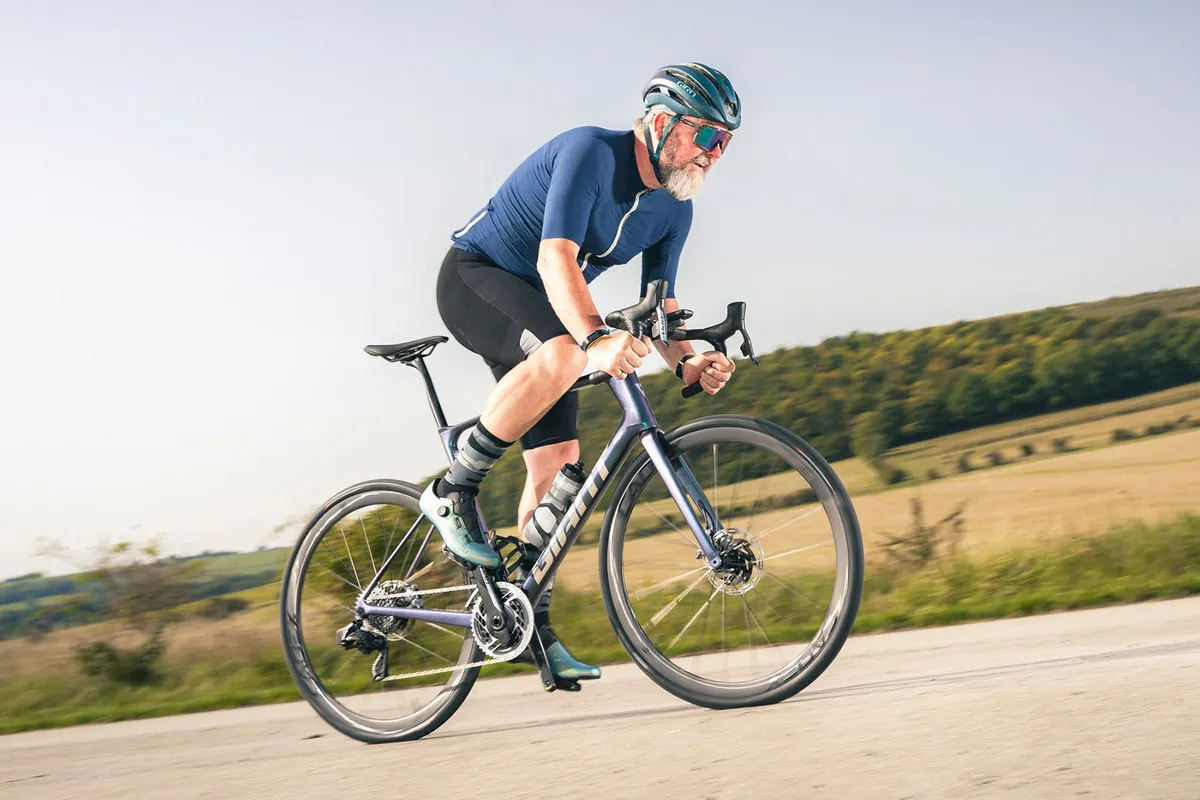
On the road, though, the new Defy feels faster than ever before.
Whether that’s due to the 9mm reduction in front-end stack height, or the new slippery tube shapes and improvements to both wheel and tyre technology in recent years, is hard to say.
Out on my most familiar roads, though, this Defy felt more akin to an all-rounder race bike such as my Giant TCR Advanced SL, rather than a relaxed long-distance cruiser.
In fact, the 2024 Defy’s stack and reach are only 15mm taller and 9mm shorter respectively than the current TCR.
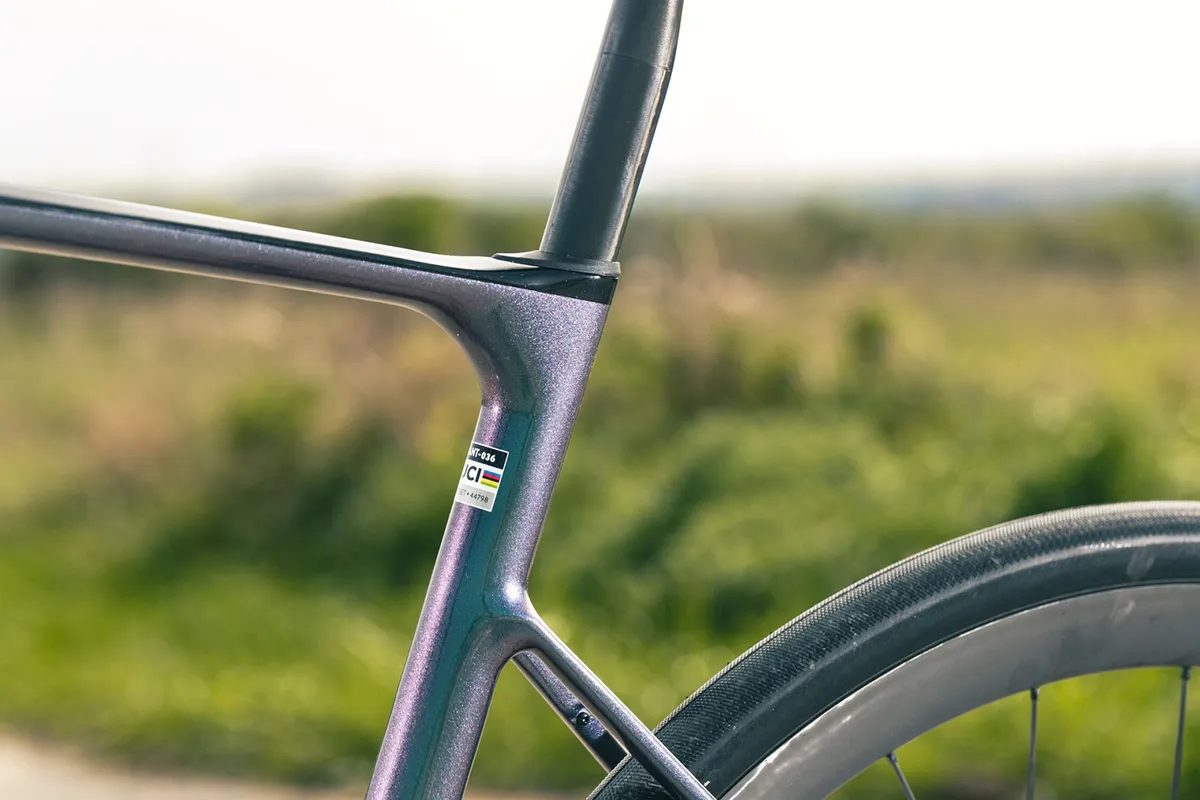
Whereas a stiff race bike such as the TCR will dash and dart over rougher road textures, though, the Defy simply wafts over them.
The brilliant carbon seatpost and handlebar also isolate you from wearing vibrations admirably. Down in the drops, though, the handlebar has sprint-ready stiffness.
When you're pushing or pulling up on the drops, it's rigid. Ride up on the hoods, however, and the flattened top section has some give that mutes chatter and keeps your upper body fresher for longer.
At the rear, a short-shaped carbon-railed Giant Fleet SLR saddle sits on top of a slender D-shaped seatpost with a leaf-spring like cutaway profile that matches the front end perfectly.
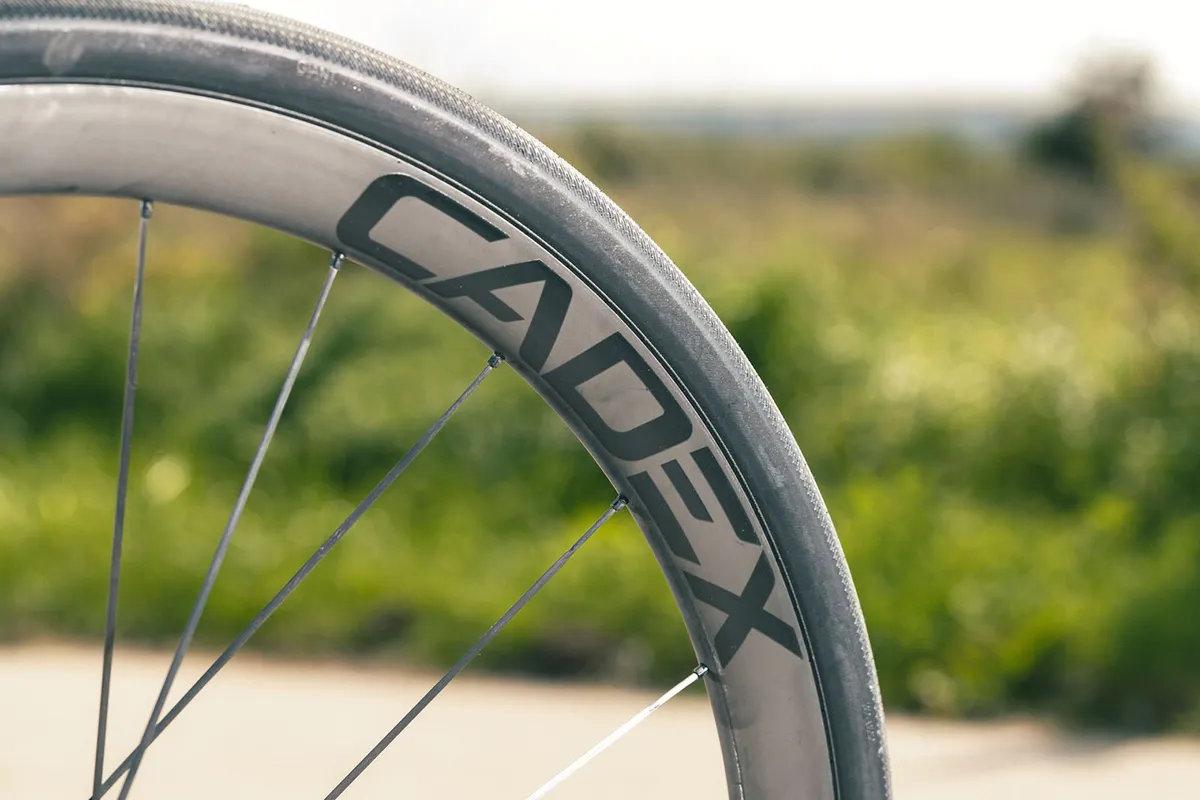
I’ve plenty of experience with the Cadex 36 wheels, having tested them on my own TCR. At £2,500 a pair, these are premium wheels, and the build combines bladed carbon spokes with serviceable alloy nipples.
The hubs combine ceramic bearings and a 40t ratchet freehub for a fast 9-degree pickup. The Chris King-like freewheel buzz is a love/hate affair, however.
The 36’s overriding feel is ‘taut’. The responsiveness of any stiff, lightweight wheel is always going to impress, but the Cadex wheels respond to big efforts with a feeling of immovable lateral stiffness.
That could be a worry if all you had was stiffness in spades, but the 36s do a fine job of rolling smoothly over rough ground too. Cadex claims its carbon spokes are better at reducing high-frequency vibration damping than traditional metal spokes. On this evidence, I’d be inclined to agree.
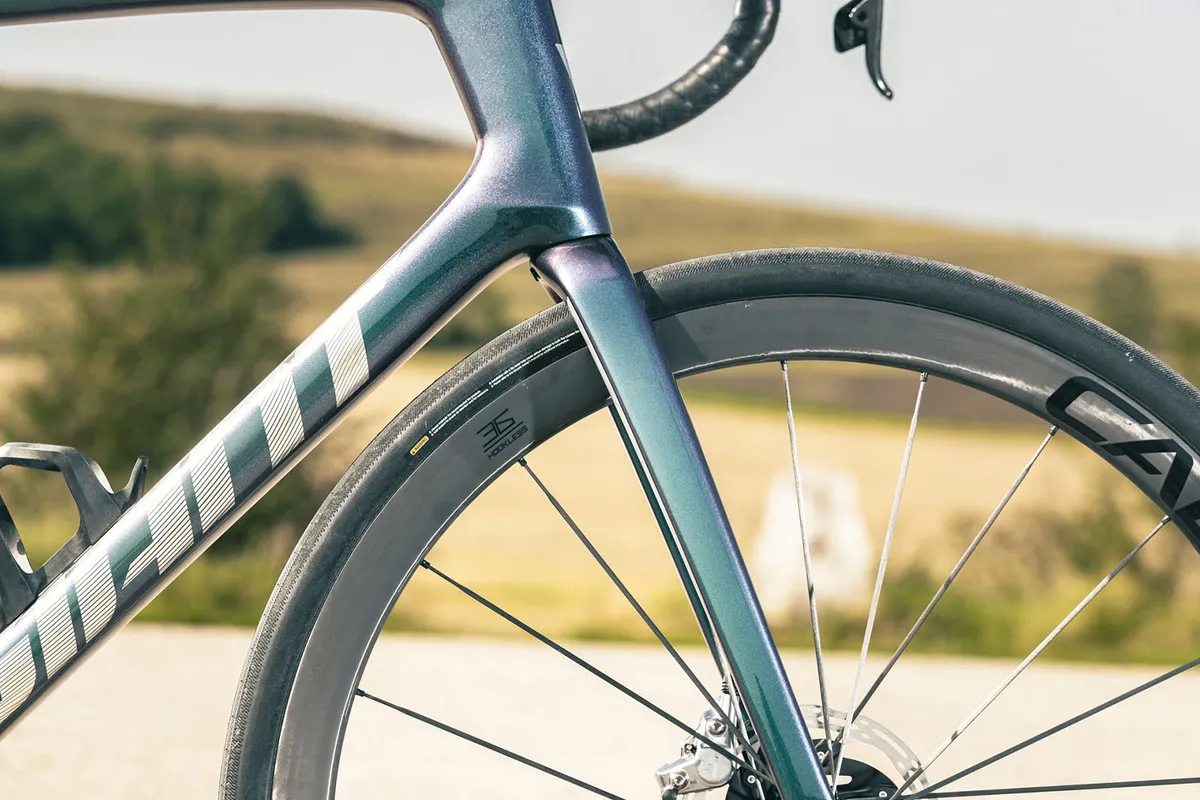
The wheels are wrapped in big (33.2mm-wide) tyres from Cadex, with this Classic model featuring a diamond-file tread. It's like a more aggressive take on the Cadex Race tyre.
I almost expected these hardy-looking tyres to be the Defy’s Achilles heel, but they grip impressively and feel plenty fast enough.
The added comfort of the larger tyre volume and puncture-protecting confidence of tubeless sealant also made for a confidence-inspiring ride.
The smoothness on rolling topography also pays dividends when it comes to heading downhill.
The Defy's ability to remain composed when the road surface was poor gave me the confidence to push harder and faster than I usually would on an unfamiliar bike.
While there are naturally many variables, my post-ride data showed I was able to keep pace on my favourite descents with bikes I’ve done hundreds, if not thousands, of miles of riding on.
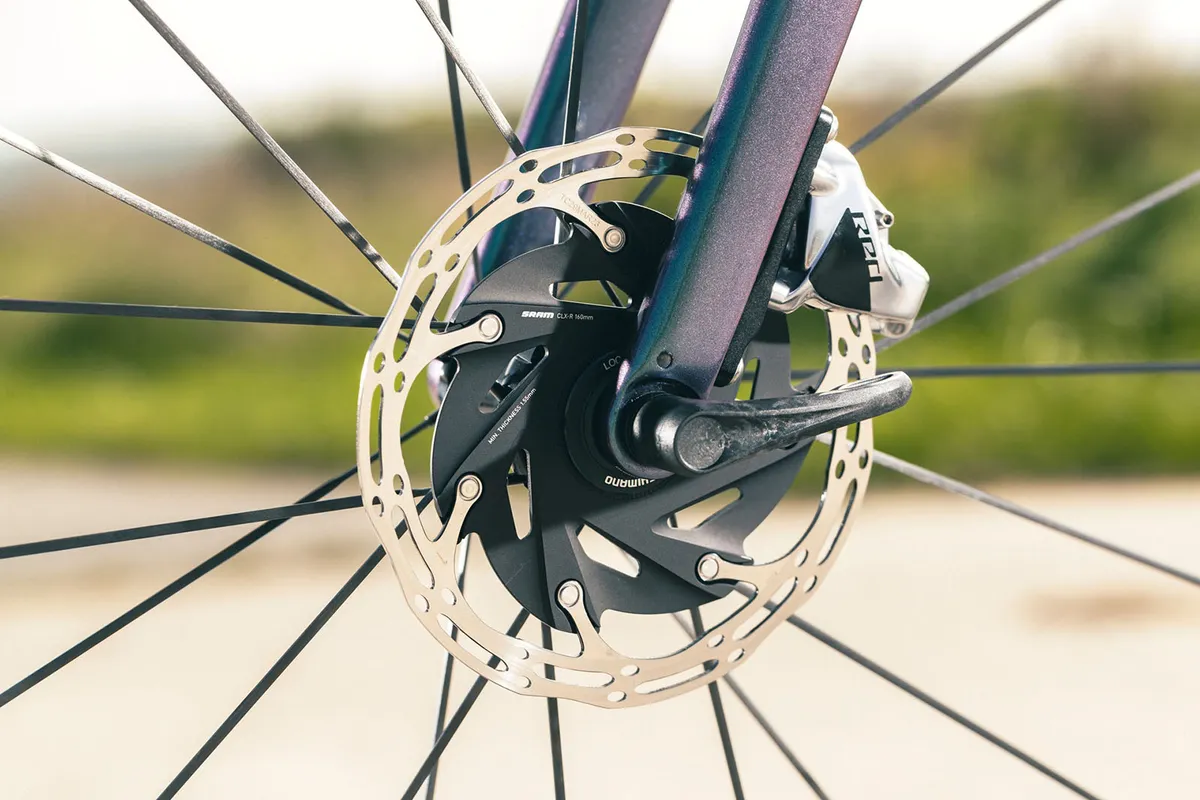
Giant has also addressed the brake specification on this new model.
While the previous-generation bikes had 140mm rotors front and rear (even on large-sized bikes), Giant now specs 160mm ones at both ends
On my test bike, the SRAM Red brakes paired with 160mm SRAM CentreLine XR rotors are a match made in heaven. Powerful, progressive, smooth and quiet – just as great hydraulic braking should be.
The handling is enhanced by the smoothness of the ride, but the best element is that Giant hasn’t slowed down the handling to calm the chaos of changing road surfaces.
This means you get a swift steering response from a fork trail that's just 58.6mm – shorter than the WorldTour-proven Propel and TCR, both of which have 59.2mm trail figures.
SRAM Red eTap AXS may be a little long in the tooth now, but it’s still a brilliant drivetrain.
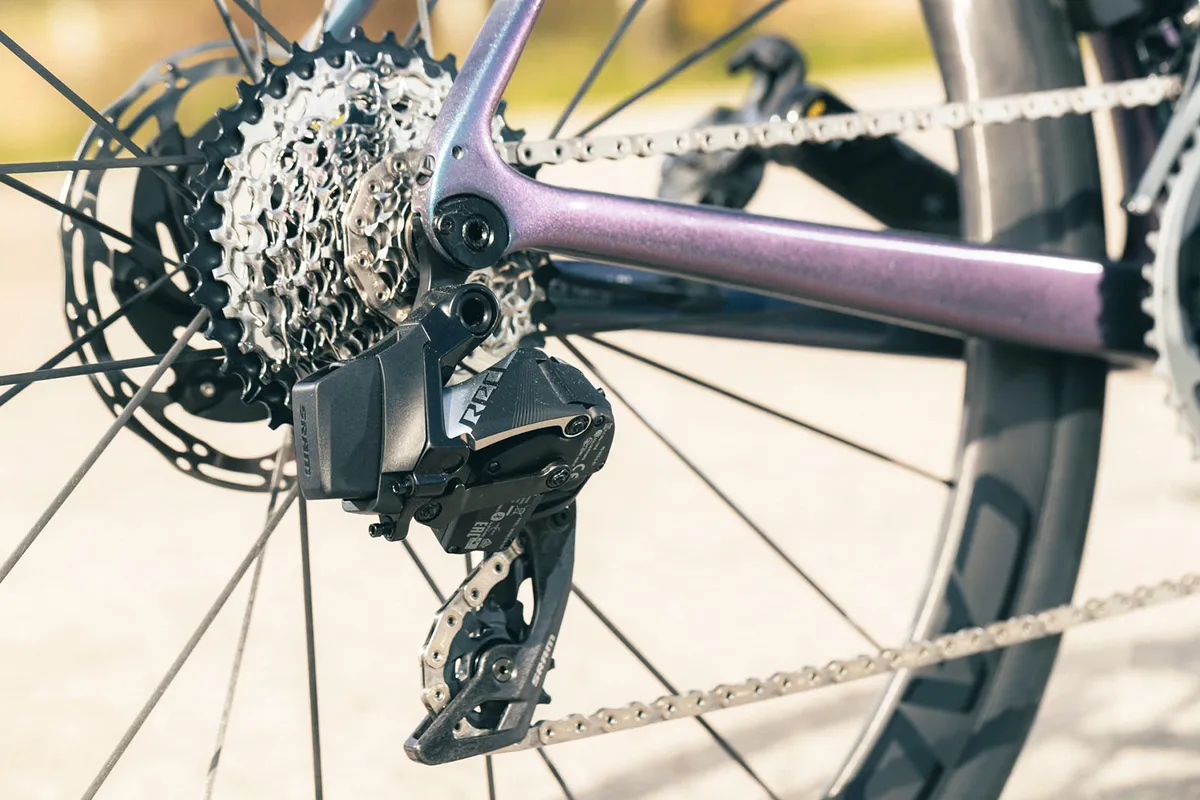
The 46/33t chainring and 10-36t cassette give gearing built for big distances, plenty at the top end (the 46x10t top gear is only marginally smaller than a 52x11t combination) and a sub-1:1 bottom gear for those end-of-the-day, leg-busting climbs where getting over the top is the only goal.
The Defy climbs like a pro too. The combination of a relatively low overall weight (7.52kg, including bottle cages and out-front bike computer mount, for my size-large test bike) and stiff, lively wheelset had me wanting to take on ascents with gusto.
The Defy Advanced SL 0 also comes with a power meter as standard, and while BikeRadar’s senior tech writer (and resident data nerd), Simon von Bromley, says the perfect power meter doesn’t exist, we both agree SRAM/Quarq’s spider-based options are among the best power meters available.
Giant Defy Advanced SL 0 bottom line
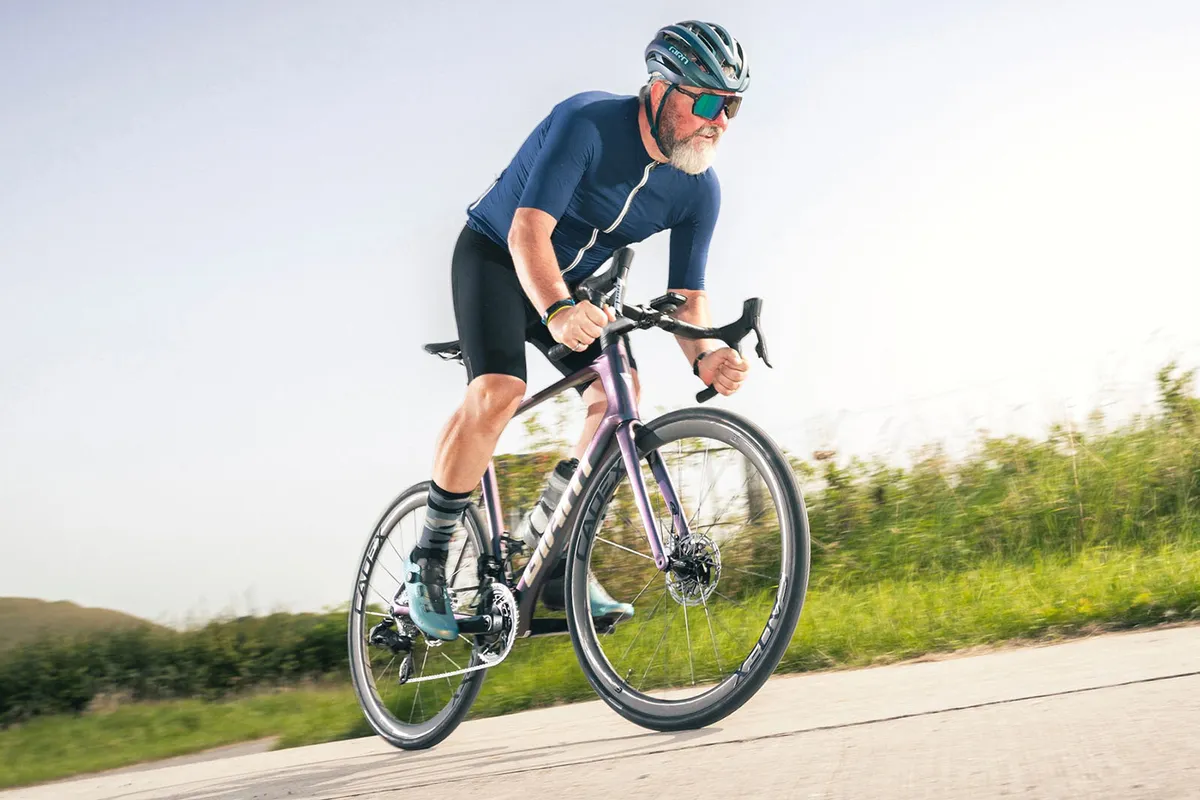
I love that Giant has kept the Defy experience pure and not felt the need to muddy (literally) this road-bound style of bike.
This latest iteration has kept the Defy’s class-leading smoothness and handling earned by its predecessors. What the brand has changed modernises the bike, but it also brings an element of race-bred excitement.
The Defy always used to be the sensible bike in Giant’s road line-up – the sport sedan rather than the coupé.
Now, though, I’m not so sure. if I was in the market for a new road bike (and let's face it, I’m always in the market for a new road bike) I’d be looking long and hard at the Defy.
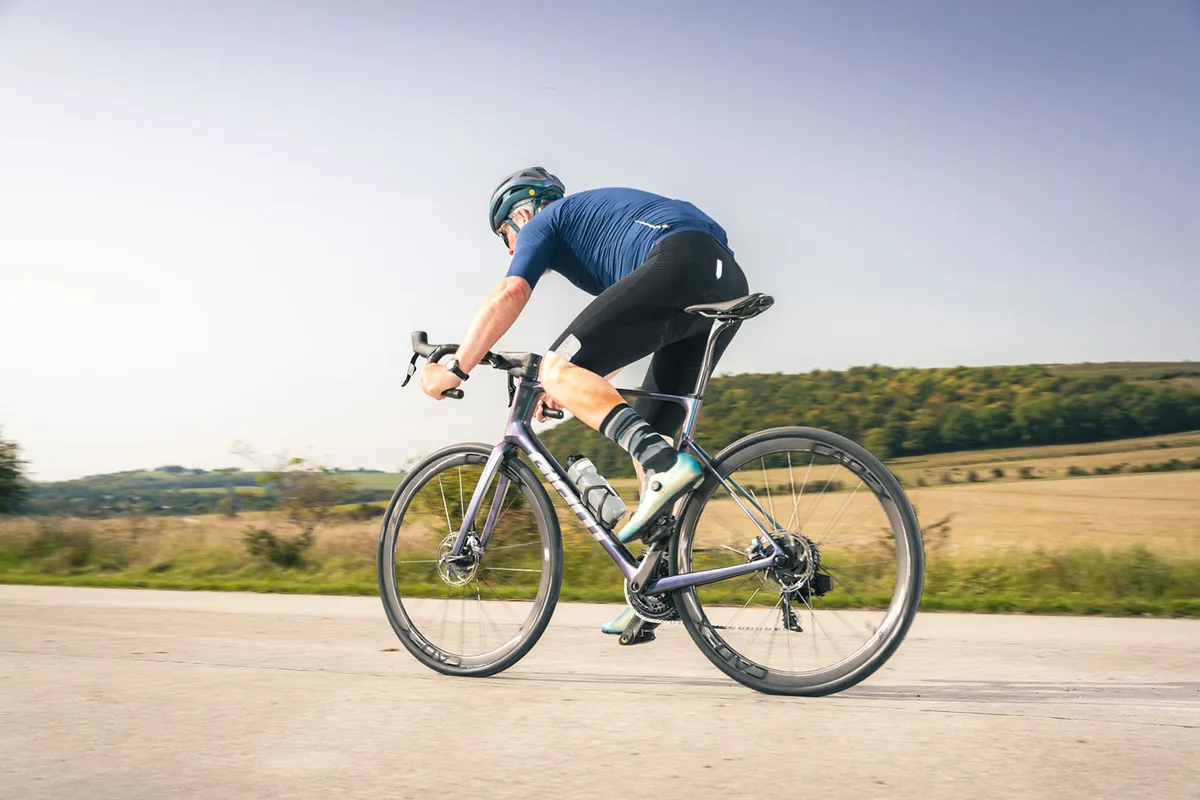
That's not because it's sensible, but because it's exciting to ride, and the compliance and comfort don’t erode that.
As a long-term TCR devotee, I may just be switching my allegiance when it comes to Giant’s road-going range.
This Defy, however, has a dream specification and comes with a price tag to match.
Compared to many of its rivals, though (such as the Specialized S-Works Roubaix or Trek Domane SLR), it’s well-specced for the money – especially considering the inclusion of a high-quality power meter and the exotic Cadex wheelset.
Product
| Brand | Giant |
| Price | A$13999.00, €11999.00, £11499.00, $12000.00 |
| Weight | 7.52kg |
Features
| Fork | Advanced SL-grade composite, full-composite OverDrive Aero steerer, disc |
| Stem | Giant Contact SLR AeroLight, 110mm |
| Chain | SRAM RED D1 |
| Frame | Advanced SL-grade composite, disc |
| Tyres | CADEX Classic, tubeless, 700x32c (33.5mm), folding |
| Brakes | SRAM RED eTap AXS hydraulic, SRAM CenterLine XR rotors, [F]160mm, [R]160mm |
| Cranks | SRAM RED D1 DUB, 33/46t with Quarq power meter, L:175mm |
| Saddle | Giant Fleet SLR |
| Wheels | CADEX 36 Disc WheelSystem |
| Shifter | SRAM RED eTap AXS |
| Cassette | SRAM Force, 12-speed, 10x36t |
| Seatpost | Giant SLR D-Fuse, composite, -5/+15mm offset |
| Grips/tape | Stratus Lite 3.0 |
| Handlebar | Giant Contact SLR D-Fuse, 44cm |
| Bottom bracket | SRAM DUB, press fit |
| Available sizes | S, M, M/L, L |
| Rear derailleur | SRAM RED eTap AXS |
| Front derailleur | SRAM RED eTap AXS |
| Features | Extras: Computer mount, fender mount, 2x bottle cages, factory tubeless set up |
